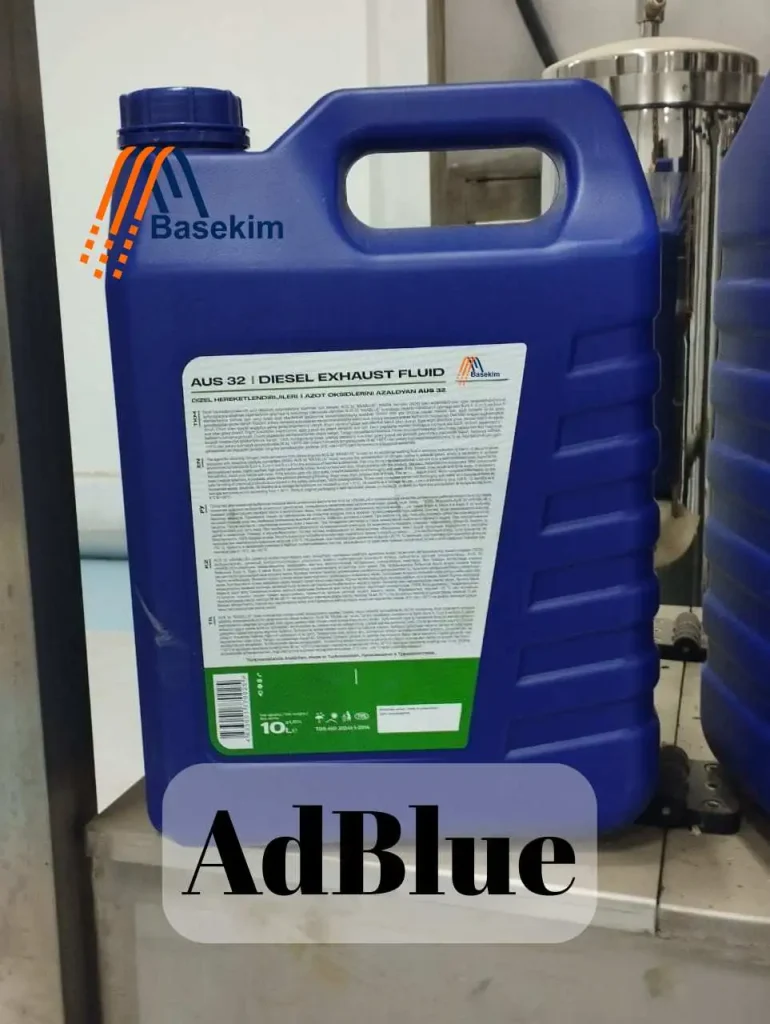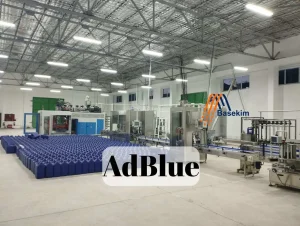
AdBlue: Complete Guide for Diesel Vehicles

AdBlue plays a central role in helping modern diesel vehicles meet strict emission rules. With Euro 6 and EPA standards in place, diesel engines must use this solution to stay compliant and reduce harmful gases. If you own a truck, a bus, or even a car with an SCR system, understanding AdBlue is essential.
What is AdBlue?
AdBlue is a clear liquid made of 32.5% high-purity urea and 67.5% deionized water. Unlike fertilizer-grade urea, this product follows the strict requirements of the ISO 22241 standard. Because of this, drivers can trust it will not harm their engines or exhaust systems.
In North America, many people call it Diesel Exhaust Fluid (DEF). Although “AdBlue” is a brand name registered by the German Automotive Association (VDA), the product itself is widely recognized under international standards.
How Does AdBlue Work?
Instead of mixing with diesel, AdBlue goes into a separate tank. The vehicle then injects the fluid into the exhaust before it reaches the Selective Catalytic Reduction (SCR) unit.
Inside the hot exhaust, the urea in AdBlue breaks down into ammonia. That ammonia reacts with nitrogen oxides (NOx), turning them into harmless nitrogen and water vapor. As a result, harmful NOx levels drop by up to 90%.
This process allows vehicles to run cleaner, comply with regulations, and even improve fuel efficiency in some cases.
Why Do Vehicles Need AdBlue?
There are several reasons why AdBlue is critical for diesel engines:
Cleaner Air: The solution reduces pollutants that contribute to smog and health problems.
Regulatory Compliance: Countries require SCR-equipped vehicles to use AdBlue to meet emission limits.
Engine Protection: Certified AdBlue prevents injector blockages and corrosion, extending the system’s life.
Without AdBlue, vehicles cannot pass inspections. In many models, the engine either limits power or refuses to start when the tank is empty.
The Production of AdBlue
Producers must follow careful steps to guarantee consistent quality:
Urea Selection – Manufacturers choose automotive-grade urea with very low impurities.
Water Purification – Facilities use reverse osmosis and ion exchange to prepare deionized water.
Solution Preparation – Urea is dissolved in water until the exact 32.5% concentration is reached.
Filtration – The liquid passes through fine filters that remove any remaining particles.
Quality Control – Laboratories test every batch for concentration, biuret levels, and heavy metals.
Packaging – The finished solution is stored in HDPE or stainless-steel tanks and then filled into IBCs, drums, or jerry cans.

Thanks to this process, the final product stays safe for SCR systems and reliable for international transport.
Storage, Handling, and Shelf Life
AdBlue remains effective only when stored correctly. The fluid freezes at –11°C, but once it thaws, it regains full quality. Normally, its shelf life ranges between 12 and 18 months. However, high temperatures above 30°C shorten this period to just six months.
For best results, keep AdBlue in a shaded, cool place between 0–25°C. Containers must be HDPE or stainless steel (304/316) because metals like copper or brass cause contamination. Although AdBlue is safe and non-flammable, it may leave white crystals if spilled. Rinse the area with water immediately to avoid residue.
Consumption of AdBlue
On average, vehicles consume 2–6% of the amount of diesel used. For example, passenger cars may need about 1 liter per 1,000 km, while heavy-duty trucks consume much more depending on distance and load.
Modern vehicles provide multiple dashboard warnings when the AdBlue tank runs low. If these alerts are ignored, the engine usually switches to limp mode or stops restarting altogether until the tank is filled again.
Choosing the Right Supplier
Only ISO 22241-certified products should be used in SCR vehicles. Certified suppliers ensure that their product has passed all quality checks and comes with a COA (Certificate of Analysis). Using uncertified alternatives puts engines and emission systems at serious risk.
For international buyers, Basekim offers AdBlue in bulk and packaged deliveries. The company guarantees compliance with ISO 22241 and provides solutions tailored for global markets.
Q1:What is AdBlue made of?
It contains 32.5% urea and 67.5% deionized water
Q2:How does it cut emissions?
Ammonia from AdBlue reacts with NOx in the exhaust, turning them into nitrogen and water
Q3:How much does my vehicle use?
Between 2–6% of diesel consumption, or about 1 liter per 1,000 km for cars
Q4:What if the tank runs dry?
The engine may reduce power or refuse to restart until refilled
Q5:Can I use water or fertilizer urea instead?
No. Only ISO-certified AdBlue protects the SCR system.
Q6:Does AdBlue freeze?
Yes, at –11°C, but thawed AdBlue works as normal
Q7:How should I store it?
Keep it between 0–25°C in stainless steel or HDPE containers
AdBlue MSDS File
Full Material Safety Data Sheet with safety instructions, chemical composition, and handling guidelines
AdBlue Analytical Report (COA)
Certified laboratory analysis report of AdBlue 32 according to ISO 22241-1:2021
Contact Info
Turkey office:No.6 of Fahrettin Pasa Sokak , Galip Erdem steet, Ilkbahar Mah. Turan Gunes Ave. Çankaya Ankara
Phone:00903125147055
Dubai office: 3509 of the Burligton tower, business bay, dubai-uae
Phone:0097142369830